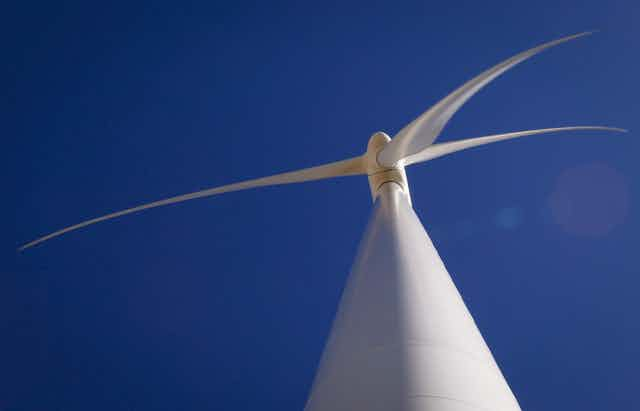There are over 50,000 Indigenous businesses in Canada today. According to the 2020 census, the Indigenous economy generated a gross domestic product of $48.9 billion dollars. A growing number of First Nations, Inuit and Métis communities are establishing economic development corporations (EDCs), of which many are involved in the renewable energy sector.
Indigenous EDCs exist across a range of industries such as retail, forestry, fisheries, energy, mining, construction and hospitality. They have the potential to be major drivers for economic growth in Indigenous communities.
The role of Indigenous EDCs in the renewable energy sector has so far been unclear. Canada’s energy industry is responsible for 80 per cent of the country’s greenhouse gas emissions. Increasing renewable energy production is an important part of reducing emissions.
Today, Indigenous communities are involved in hundreds of large renewable energy projects and thousands of small ones.
Renewable energy
With support from community members and the band council, an Indigenous community can establish an EDC as a separate for-profit business entity to engage in commercial opportunities on its behalf. As a business, the EDC may enter into partnerships and joint ventures, including owning renewable energy projects. Unlike other businesses, the community’s members are the only shareholder. That means the EDC is responsible to the community and its board of directors.

Our research offers new findings about the role of Indigenous EDCs in supporting the development of renewable energy projects and how this links to socioeconomic benefits for communities.
In partnership with the Canadian Council for Aboriginal Business, we surveyed and interviewed eight representatives of First Nation EDCs with active renewable energy projects. Through online desk research and the survey and interview results, we were able to provide an overview of First Nation communities and EDC involvement in the renewable energy sector.
Indigenous communities can be involved in renewable energy projects in a number of ways. The benefits of revenues can be important to improving communities’ self-determination and economic reconciliation.
Benefits of ownership
In most projects, either the band council or the EDC can be involved in the project’s contractual arrangements. These arrangements correlate to the amount of Indigenous ownership in a project. For example, communities can be equity owners in projects, either as full or partial owners, in which they receive revenues and some control over project decision-making.
When a community has little to no ownership in a project, the governance agreement between the Indigenous community and company developing it is usually a resource revenue or impact and benefit agreement. These types of agreements typically offer less control and economic benefits compared to when a community has meaningful or full ownership shares in a project.
Scholars, and some of our research participants, argue that ownership brings greater benefits to communities than revenue sharing or impact and benefit agreements that tend to be weaker and short-lived.
Although all types of governance and ownership structures will likely provide some form of economic benefits, Indigenous ownership in a renewable energy project offers more control over decision-making and community pride.

Financial risks
According to our analysis, there are at least 294 Indigenous EDCs operating in Canada. In our study, we learned that up to 26 EDCs are involved in 47 solar, wind, biomass and hydroelectric projects that range in size from 0.5 to 230 megawatts. We also found that Indigenous EDCs more often tend to be involved in ownership of projects, such as partnerships and joint ventures, whereas the Band Council is more often involved in political governance structures such as resource-sharing agreements.
Despite the stronger benefits of ownership, our findings show Indigenous communities own few large renewable energy projects. Our interviews confirmed that not every community strives for whole ownership in renewable energy projects. Communities were concerned about the amount of money they’d need to borrow to finance the projects.
Some interviewees pointed out that the financial risk of greater project ownership may be too high for their community to take on. Some Indigenous and business leaders have called for an Indigenous loans guarantee program to ensure their communities can access the capital needed to partner in clean energy infrastructure projects.
Ownership denotes control over a project, which would align with the United Nations Declaration on the Rights of Indigenous People and Indigenous rights to self-determination.
Indigenous EDCs are emerging as important players in renewable energy deployment, as they are involved in ownership of an increasing number of renewable energy projects of a range of sizes. With the right support, more EDCs could be involved in the development of renewable energy projects. This could strengthen Indigenous self-determination and give communities the ability to benefit from and control resource developments on their lands.
Katarina Savic from the consultancy firm Mokwateh co-authored this article and led the research project.

